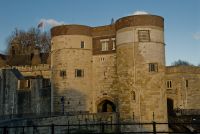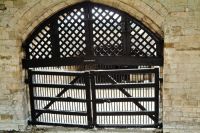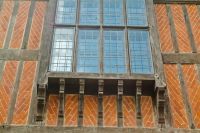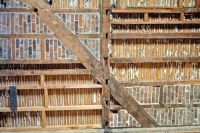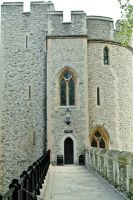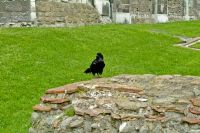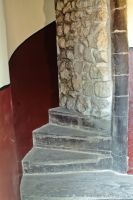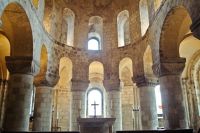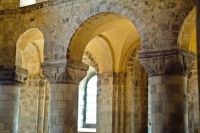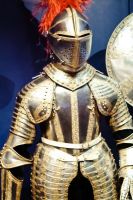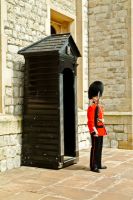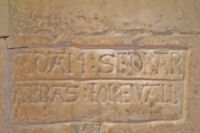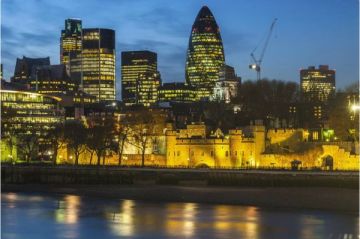Part 1 - Towers of the Tower of London | Tower of London Facts
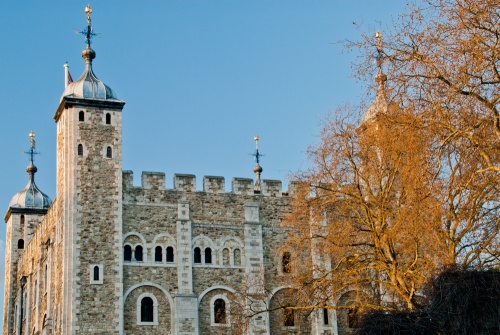
Overview and Introduction
Founded nearly a millennium ago, The Tower of London has been expanded upon over the centuries by many a king and queen. The first foundations were laid in 1078 and the castle has been constantly improved and extended.
The Tower of London is the oldest palace, fortress and prison in Europe. The origins of the Tower begin with the Norman invasion of England. William, Duke of Normandy met King Harold at the Battle of Hastings on 14 October 1066. The Duke's Norman warriors won the battle, and William was crowned king on Christmas Day.
William was a foreigner in a land he did not yet firmly control. He needed a stronghold to keep the rebellious citizens of London in line. The site William chose for his castle was the very same site upon which Claudius, the Roman Emperor, had built a fortress more than a thousand years before, and traces of the old Roman walls can still be seen within the Tower grounds.
The addition of other smaller towers, extra buildings, walls and walkways, gradually transformed the original building into the splendid example of a castle, fortress, prison, palace and finally museum that we enjoy today.
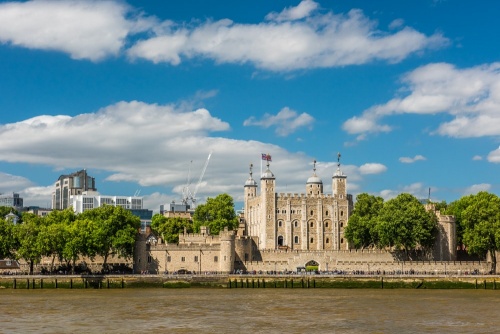
The Tower began as a simple timber and stone enclosure. The original structure was completed by the addition of a ditch and palisade along the north and west sides. Within this enclosure, a stone structure was built. This stone building came to be called The Great Tower.
Around the year 1240 King Henry III made the Tower of London his home. He whitewashed the Great Tower, widened the grounds to include a church, and added a great hall and other buildings. The Normans called the tower 'La Tour Blanche' (White Tower) on account of its whitewashed exterior.
The White Tower formed the basis of a residential palace and fortress suited for a king or queen, and the Tower of London became an all-purpose complex.
Originally the caps at the top of the White Tower's four turrets were conical but were replaced by the present onion-shaped ones in the sixteenth century. Henry III began to use the Tower as a prison, but at the same time, he continued to use it as a palace where he entertained important guests. Many of these guests came with gifts of animals for the king. These gifts were kept near the drawbridge where Henry built Lion Tower; a royal zoo where visitors would be greeted by roaring beasts.
The Tower Ravens
Today it houses the keeper of the Royal Ravens. The Tower of London ravens are flightless birds due to the fact their wings are clipped. This tradition relates to a superstition from the time of Charles II that when there are no longer ravens at the Tower both the White Tower and the Commonwealth of England will fall.
The Tower was a dynamic project for the monarchs of England. Kings and queens built upon the Tower over the centuries, adding walls and smaller towers (thirteen inner and six outer) and finally encircling the entire complex within a moat fed by the River Thames.
Today the official title of the Tower is still 'Her Majesty's Royal Palace and Fortress the Tower of London' although there isn't actually a single Tower of London. It is not quite known when the name was first used but through the ages 'Tower of London' has become the accepted term of description for the entire complex.
In part two of this series of articles on the Tower of London we'll take a closer look at the history of the Tower, and some of the famous (and infamous) events that have transpired within its walls.
About the author
Kathy McGillick is an attorney in the United States. She and her son have been travelling together since 1996. (London naturally is their favourite place)
About Tower of London
Address: Tower Hill,
London,
Greater London,
England, EC3N 4AB
Attraction Type: Castle
Website: Tower of London
Email: VisitorServices.TOL@hrp.org.uk
Location
map
OS: TQ335 806
Photo Credit: David Ross and Britain Express
Nearest station: ![]() Tower Hill - 0.1 miles (straight line) - Zone: 1
Tower Hill - 0.1 miles (straight line) - Zone: 1
Note: You can get Free Entry to Tower of London with the London Pass
HERITAGE
 We've 'tagged' this attraction information to help you find related historic attractions and learn more about major time periods mentioned.
We've 'tagged' this attraction information to help you find related historic attractions and learn more about major time periods mentioned.
Historic Time Periods:
Find other attractions tagged with:
Anne Boleyn (Person) - castle (Architecture) - Charles II (Person) - Cromwell (Person) - Henry III (Person) - Henry VI (Person) - Jane Grey (Person) - moat (Historical Reference) - Norman (Architecture) - Roman (Time Period) - William the Conqueror (Person) -
NEARBY HISTORIC ATTRACTIONS
Heritage Rated from 1- 5 (low to exceptional) on historic interest
All Hallows-by-the-Tower - 0.2 miles (Historic Church) ![]()
St Olave, Hart Street - 0.2 miles (Historic Church) ![]()
All Hallows Staining - 0.3 miles (Historic Church) ![]()
HMS Belfast - 0.3 miles (Museum) ![]()
Tower Bridge - 0.4 miles (Historic Building) ![]()
St Botolph without Aldgate - 0.4 miles (Historic Church) ![]()
Leadenhall Market - 0.4 miles (Historic Building) ![]()
London Monument - 0.4 miles (Historic Building) ![]()
Nearest Holiday Cottages to Tower of London:
Leaves Green, Greater London
Sleeps: 6
Stay from: £857 - 3127
Culverstone Green, Kent
Sleeps: 2
Stay from: £353 - 1071
More self catering near Tower of London
